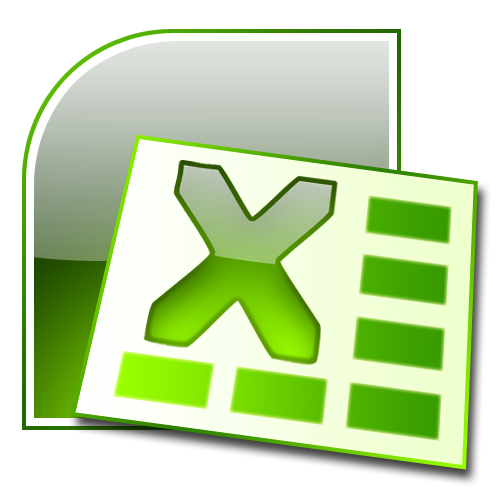-
-
products
-
resources
-
support
-
company
-
Login
-
.xlw File Extension
Developer: MicrosoftFile type: Excel Workspace FileYou're here because you have a file that has a file extension ending in .xlw. Files with the file extension .xlw can only be launched by certain applications. It's possible that .xlw files are data files rather than documents or media, which means they're not meant to be viewed at all.what is a .xlw file?
The .xlw file extension is attached to files called workspace files saved using Microsoft Excel, a popular spreadsheet application. .xlw files are files containing screen locations of numerous workbooks, and workbook file references. Opening .xlw files allows the application to restore them back to the location they were saved to on the screen. When a user is simultaneously working on numerous workbooks, .xlw files play a big part in restoring layouts. .xlw files should not be misunderstood as files that contain workbook data because they only refer to workbook layouts on the screen. These files are mostly used by Microsoft Excel 2010 and 2011 and in order to properly reopen these files, users must have all workbook files. However, in order to open these .xlw files, users must install a variety of applications in their computer such as Excel 2010 and 2011, Microsoft Office Mobile , Microsoft Office XP, Microsoft Application Virtualization and even Microsoft Excel 2000 and 2003.how to open a .xlw file?
Launch a .xlw file, or any other file on your PC, by double-clicking it. If your file associations are set up correctly, the application that's meant to open your .xlw file will open it. It's possible you may need to download or purchase the correct application. It's also possible that you have the correct application on your PC, but .xlw files aren't yet associated with it. In this case, when you try to open a .xlw file, you can tell Windows which application is the correct one for that file. From then on, opening a .xlw file will open the correct application. Click here to fix .xlw file association errorsapplications that open a .xlw file
 Microsoft Office Excel 2012
Microsoft Office Excel 2012Microsoft Office Excel 2012
Microsoft Excel is a spreadsheet program developed by Microsoft Corporation for Microsoft Windows and Mac OS X. It is a part of Microsoft Office, known for creating graphs, charts and spreadsheets, and its templates are created in a file with .xlt extension containing the default spreadsheet data, which is significant in creating new Excel files. These files can either be created by users or that which is provided by Excel, allowing users to make several workbooks. It works in calculation, graphing tools, pivot tables, and Visual Basic applications via macros. A variety of Microsoft Excel versions support the files with .xlt extension, such as Microsoft Excel Mobile support, Lotus Translation Table, PDF Creator, Microsoft Application Virtualization, Procomm Plus Translation Table and Microsoft Open XML Converter. The present version of this program, as of this writing, is Microsoft Excel 2012. There are some applications that can also be used to open these files, such as PlanMaker, NeoOffice, LibreOffice Calc, OpenOffice Calc, etc. Microsoft Excel 2010
Microsoft Excel 2010Microsoft Excel 2010
Microsoft Excel 2010 is one of the many versions of spread sheet tools that were released by Microsoft. This program has built-in tools which includes the ones being used for visualization and analysis which helps its users highlight as well as track the data trends which are deemed important. This version allows its users to access their data even with just the use of a smartphone or a Web browser. The file that is being created using Microsoft Excel 2010 can be uploaded to the Web which will allow it to be accessible to your colleagues as well so that you can all work together on the file. It has the capability of allowing its users to visualize the summary of their data with the use of the built-in tiny charts that can actually fit inside the cell along with the user’s text data together with Sparklines. Microsoft Office
Microsoft OfficeMicrosoft Office
Microsoft Office is an office suite of desktop applications, servers and services, released by Microsoft on August 1, 1989 for the Microsoft Windows and Mac OS X operating systems. Originally, the first version of Microsoft Office contained Microsoft Word, a word processor and was previously considered the main program in Office; Microsoft Excel, a spreadsheet program that originally competed with the dominant Lotus 1-2-3; and Microsoft PowerPoint, a popular presentation program for Windows and Mac.; a marketing term for a bundled set of applications. As years passed by, Office applications have grown significantly closer with shared features such as a common spell checker, Object Linking and Embedding (OLE) data integration and Microsoft Visual Basic for Applications scripting language. Microsoft also positions Office as a development platform for line-of-business software under the Office Business Applications brand. The current versions are Office 2010 for Windows, released on June 15, 2010; and Office 2011 for Mac OS X, released October 26, 2010.The new Office 2013 (version 15 of the Office suite) is reported to be released around December 2012.a word of warning
Be careful not to rename the extension on .xlw files, or any other files. This will not change the file type. Only special conversion software can change a file from one file type to another.what is a file extension?
A file extension is the set of three or four characters at the end of a filename; in this case, .xlw. File extensions tell you what type of file it is, and tell Windows what programs can open it. Windows often associates a default program to each file extension, so that when you double-click the file, the program launches automatically. When that program is no longer on your PC, you can sometimes get an error when you try to open the associated file.leave a comment

